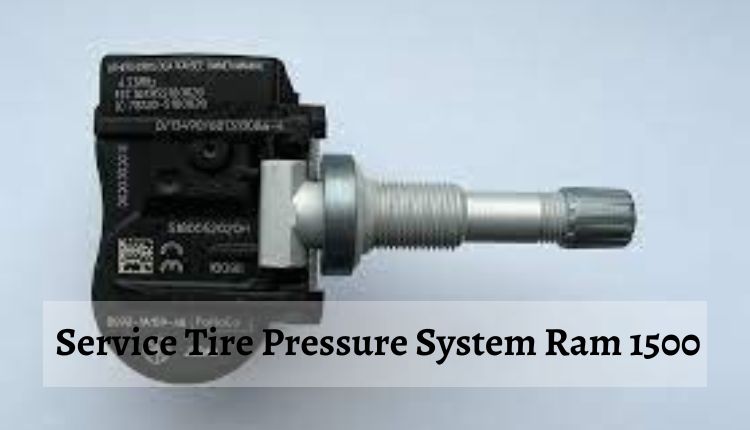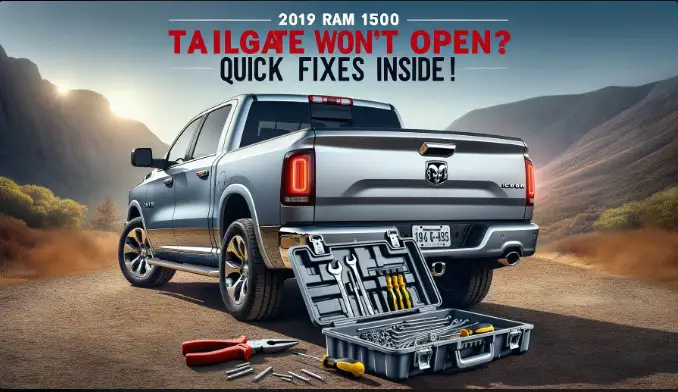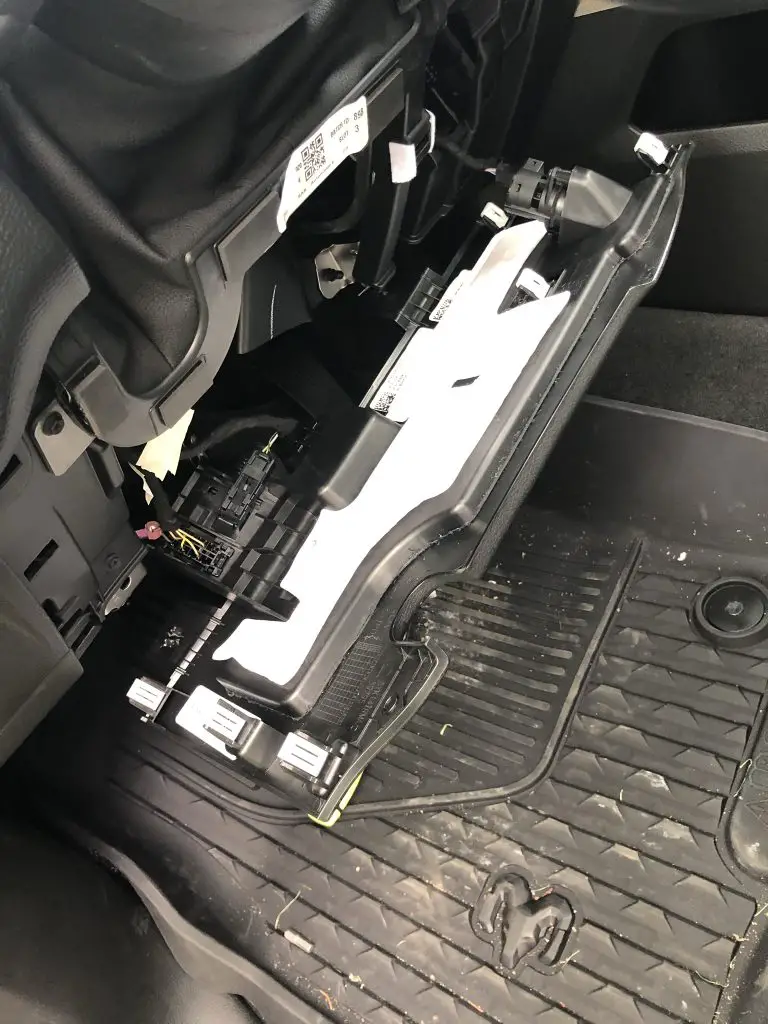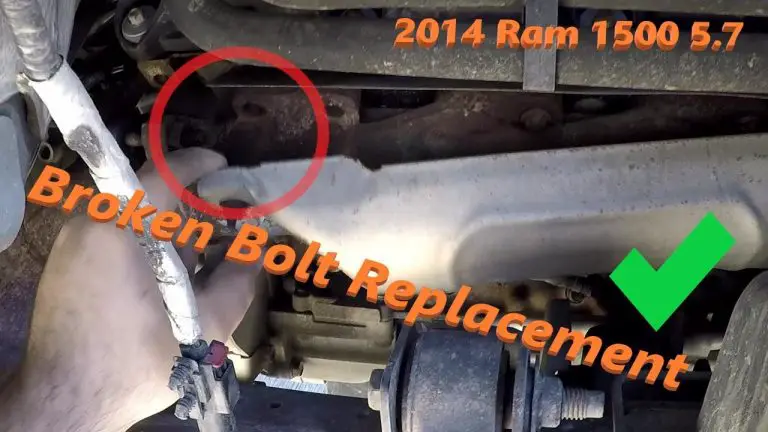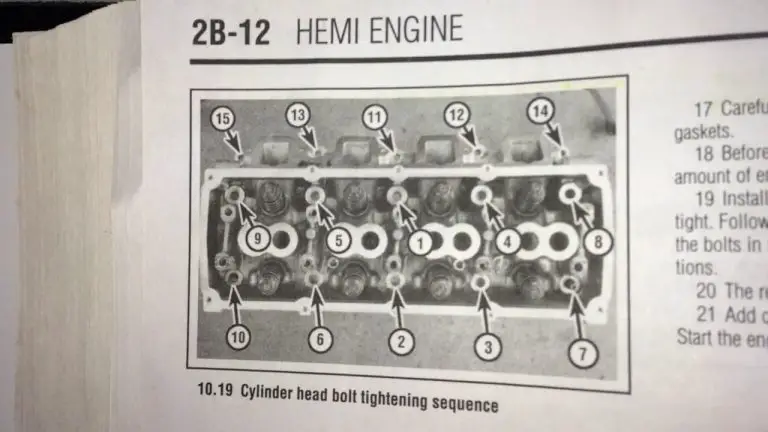2014 Ram 1500 Heater Not Blowing Hot Air – Quick Solutions
Are you facing the chilly dilemma of your 2014 Ram 1500’s heater not blowing hot air? This common issue can turn a comfortable drive into a shivering experience, especially during the cold months. Understanding the problem and knowing how to fix it is not just a matter of comfort but also of safety.
In this comprehensive guide, we’ll delve into the inner workings of your Ram 1500’s heating system, uncover the common culprits behind this issue, and provide you with practical DIY solutions.
From simple checks like coolant levels to more complex fixes involving the thermostat or heater core, we’ve got you covered. So, let’s get started on the journey to restore the warmth to your Ram 1500’s cabin!
- Common Causes: Learn about the usual suspects causing heating issues.
- DIY Fixes: Explore simple solutions you can try at home.
- Advanced Troubleshooting: Get insights into more complex fixes.
- Maintenance Tips: Discover how to prevent future heating problems.
- Understanding the Heating System: Dive into how your Ram 1500’s heater operates.
With this guide, you’ll be equipped to diagnose and fix the heating issue in your 2014 Ram 1500, ensuring a warm and comfortable drive, no matter the weather outside.
Common Causes for 2014 Ram 1500 Heater Not Blowing Hot Air
When your 2014 Ram 1500’s heater isn’t blowing hot air, it can be due to several issues. Let’s break down the most common causes and understand why these problems occur.
Low Coolant Levels and Cooling System Issues
Low Coolant Levels: One of the primary reasons for heating issues is low coolant levels. The coolant is responsible for transferring heat from the engine to the heater core. When the level is low, there isn’t enough coolant to carry sufficient heat, resulting in lukewarm air.
Cooling System Airlocks: Air in the cooling system can also lead to heating problems. This air pocket prevents coolant from flowing freely, thereby reducing the system’s efficiency in delivering heat to the heater core.
Clogged Heater Core
The heater core is like a mini-radiator inside your truck, and it can become clogged over time. This clogging prevents the heated coolant from passing through, significantly diminishing the heater’s effectiveness.
Thermostat Issues
Stuck Thermostat: The thermostat regulates the flow of coolant. If it’s stuck in the open position, the coolant flows continuously, not allowing it to heat up sufficiently. Conversely, if it’s stuck closed, the coolant can’t reach the heater core at all.
Blend Door Actuator Problems
The blend door actuator controls the mix of hot and cold air. A malfunction here means the hot air isn’t properly channeled into the cabin, leading to a lack of heat despite the heater core working correctly.
Water Pump and Cabin Air Filter Concerns
Water Pump Failure: A malfunctioning water pump can’t circulate the coolant effectively, disrupting the heating process.
Cabin Air Filter: A dirty or clogged cabin air filter restricts the airflow, reducing the efficiency of your heating system.
Understanding these common causes is the first step in troubleshooting the issue. Each problem has specific symptoms and solutions, which we’ll explore in the upcoming sections.
DIY Troubleshooting and Fixes For Not Blowing Hot Air
If your 2014 Ram 1500’s heater is not blowing hot air, there are several DIY troubleshooting steps and fixes you can undertake before resorting to professional help. These steps are designed to identify and possibly fix common issues with minimal technical expertise.
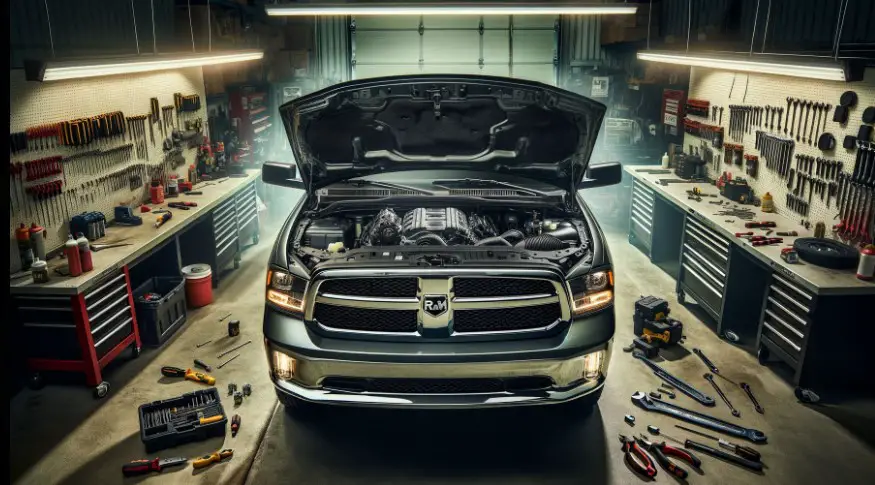
Checking and Replacing Fuses
Fuse Inspection: A simple yet often overlooked step is checking the fuses. Your Ram 1500’s fuse box, usually located under the hood, contains fuses for various components, including the heater. Inspect these fuses and look for any signs of damage or burnout.
Replacing Fuses: If you find a blown fuse, replacing it is straightforward. Ensure you use a fuse of the same amperage to avoid any electrical issues.
Simple DIY Checks and Fixes
Here are some easy checks and fixes you can perform:
- Coolant Level Check: Ensure the coolant level is at the appropriate mark in the reservoir. If it’s low, top it up and monitor to see if the level drops again, indicating a possible leak.
- Bleeding Air from the Cooling System: If you suspect airlocks in your cooling system, ‘bleeding’ it might resolve the issue. This process involves running the engine with the radiator cap off and the heater on to allow air to escape.
- Inspecting the Cabin Air Filter: Check the cabin air filter, located behind the glove box or under the dashboard, for dirt or clogs. Replace if necessary.
- Checking the Thermostat: If you’re comfortable with more advanced DIY, check the thermostat. A quick test is to touch the radiator hoses when the engine is warm; if one hose is hot and the other is significantly cooler, your thermostat might be stuck.
These are basic steps you can take to potentially resolve the heating issue. However, if these don’t work, the problem might be more complex, requiring advanced troubleshooting or professional assistance.
Advanced Troubleshooting Techniques To resolve the heating issue
When basic DIY fixes don’t resolve the heating issue in your 2014 Ram 1500, it’s time to delve into more advanced troubleshooting. These techniques require a bit more technical knowledge and some specialized tools, but they can help you pinpoint the exact cause of the problem.
- Heater Core Flush: If you suspect a clogged heater core, flushing it can often restore proper function. This process involves draining the coolant, disconnecting the heater hoses, and using a garden hose to flush out any debris from the heater core.
- Testing the Blend Door Actuator: The blend door actuator can be tested for proper operation. This might involve removing panels under the dash to access the actuator. Listen for any unusual noises when changing the temperature settings, which might indicate a faulty actuator.
- Water Pump Inspection: A failing water pump can lead to inadequate coolant circulation, impacting the heating system. Signs of a bad water pump include coolant leaks, whining noises, or engine overheating.
- Electrical System Check: If your Ram 1500 has an HVAC (Heating, Ventilation, and Air Conditioning) control unit, electrical issues could be the culprit. Use a multimeter to check for proper voltage and ground at the HVAC control unit and blower motor.
- Tools and Equipment: You’ll need a range of tools for these tasks, including a garden hose, screwdrivers, a multimeter, and possibly hose clamps or pliers.
Before attempting these advanced techniques, ensure you have the necessary skills and understand the risks involved. If in doubt, it’s always safer and more efficient to consult a professional mechanic.
Preventive Maintenance Tips
Regular maintenance is key to preventing issues with your 2014 Ram 1500’s heating system. By following these tips, you can reduce the likelihood of facing a heater not blowing hot air and ensure a comfortable driving experience year-round.
- Regular Coolant Checks and Changes: Monitor your coolant level frequently and top it up if necessary. Additionally, follow your manufacturer’s guidelines on coolant changes, as old or contaminated coolant can lead to heating system problems.
- Routine Air Filter Replacement: The cabin air filter should be checked and replaced regularly. A clean filter ensures optimal airflow and heating efficiency. The replacement interval can typically be found in your vehicle’s manual.
- Heater Core Maintenance: While the heater core generally requires little maintenance, keeping the coolant system clean and free of debris can prevent clogging.
- Thermostat Inspection: The thermostat should be inspected periodically, especially if you notice temperature fluctuations or issues with your heating system.
- Water Pump Check: Listen for noises from the water pump and watch for coolant leaks, which can be early signs of water pump failure.
- Annual HVAC System Check: Consider having a professional mechanic check your HVAC system annually, especially before the colder months, to ensure everything is in working order.
These preventive measures not only help maintain your heater’s performance but also contribute to the overall health of your vehicle. Regular maintenance can save you time and money by avoiding more complex and costly repairs in the future.
When to Consult a Professional
While many heating issues in your 2014 Ram 1500 can be addressed with DIY methods, there are instances when consulting a professional is the best course of action. Understanding when to seek professional help can save you time and ensure the problem is resolved effectively and safely.
- Complex Diagnostics: If you’ve tried basic troubleshooting without success, the problem may require more advanced diagnostic tools and skills that a professional mechanic possesses.
- Safety Concerns: Working on the heating system can involve dealing with the engine’s cooling system, electrical components, and potentially hazardous materials. If you’re not confident in your ability to handle these safely, it’s better to consult a professional.
- Recurring Problems: If the heating issue keeps recurring despite your attempts to fix it, this could indicate a more complex underlying problem that a professional mechanic can better diagnose and resolve.
- Warranty Considerations: If your Ram 1500 is still under warranty, certain repairs might need to be performed by a certified mechanic to maintain the warranty.
- Choosing the Right Service Provider: Look for a reputable service center or mechanic with experience in Ram 1500 vehicles. Check reviews, ask for recommendations, and ensure they have the necessary certifications.
By understanding the limits of DIY fixes and knowing when to seek professional help, you can ensure that your heating system issues are resolved efficiently and your vehicle remains in optimal condition.
Understanding Your 2014 Ram 1500’s Heating System
The heating system in your 2014 Ram 1500 is a key component that ensures your comfort during drives in colder weather. It’s intricately connected to your truck’s engine and plays a crucial role in the overall functionality of your vehicle. Here’s a brief look at how it works:
- Heat Source: The heater in your Ram 1500 gets its warmth directly from the engine. When the engine runs, it generates heat, which is then transferred to the heater system.
- Coolant Role: The coolant circulating in the engine absorbs this heat and carries it to the heater core located inside the cabin.
- Air Flow: As you turn on your heater, a fan blows air over the heated heater core, pushing warm air into the cabin to increase the temperature.
Understanding this process is crucial for diagnosing why your heater might not be blowing hot air. Issues can arise anywhere along this path – from the engine’s heat generation to the final air delivery into the cabin.
Conclusion
Dealing with a heater in your 2014 Ram 1500 that’s not blowing hot air can be a frustrating experience, especially during cold weather. However, with the information provided in this guide, you’re now equipped with the knowledge to diagnose and address this common issue.
From checking coolant levels and fuses to more advanced troubleshooting like inspecting the blend door actuator and the heater core, these steps can help you restore warmth and comfort to your vehicle’s cabin.
Remember, regular maintenance is key to preventing heating system problems. If you’re ever in doubt or the issue persists, don’t hesitate to consult a professional mechanic. Their expertise can be invaluable in ensuring your truck runs smoothly and keeps you warm on your journeys.
By understanding the causes, exploring DIY solutions, and knowing when to seek professional help, you’re well-prepared to tackle heating issues in your 2014 Ram 1500, ensuring a comfortable and safe driving experience in any weather.


